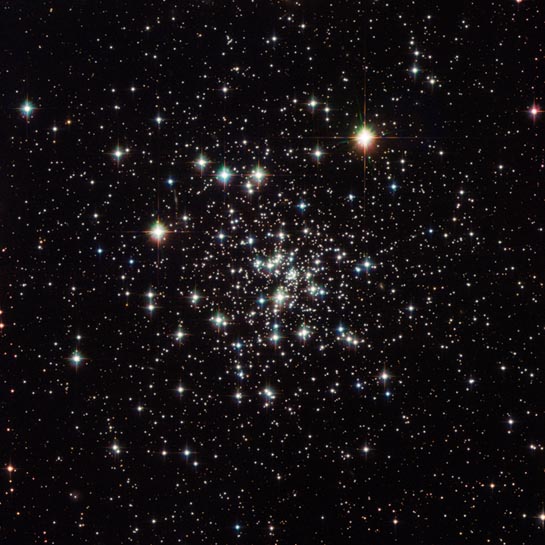
Globular Star Cluster
RA 18hr 03m 50.51s Dec -00° 17' 51.5"
Serpens
9.3
1.3 arc-min
22,000 light years
ESA/Hubble & NASA, Ack: Gilles Chapdelaine
December 29, 2014
ABOUT THIS IMAGE:
This image captures the stunning NGC 6535, a globular cluster 22,000 light-years away in the constellation of Serpens (The Serpent) that measures one light-year across.
Globular clusters are tightly bound groups of stars which orbit galaxies. The large mass in the rich stellar center of the globular cluster pulls the stars inward to form a ball of stars. The word globulus, from which these clusters take their name, is Latin for small sphere.
Globular clusters are generally very ancient objects formed around the same time as their host galaxy. To date, no new star formations have been observed within a globular cluster, which explains the abundance of aging yellow stars in this image, most of them containing very few heavy elements.
NGC
6535 was first discovered on April 26, 1852 by English astronomer John
Russell Hind. The cluster would have appeared to Hind as a small, faint
smudge through his telescope. Now, over 160 years later, instruments like
the Advanced Camera for Surveys (ACS) and Wide Field Camera 3 (WFC3) on
the NASA/ESA Hubble Space Telescope allow us to capture the cluster close
up and marvel at its contents in detail.